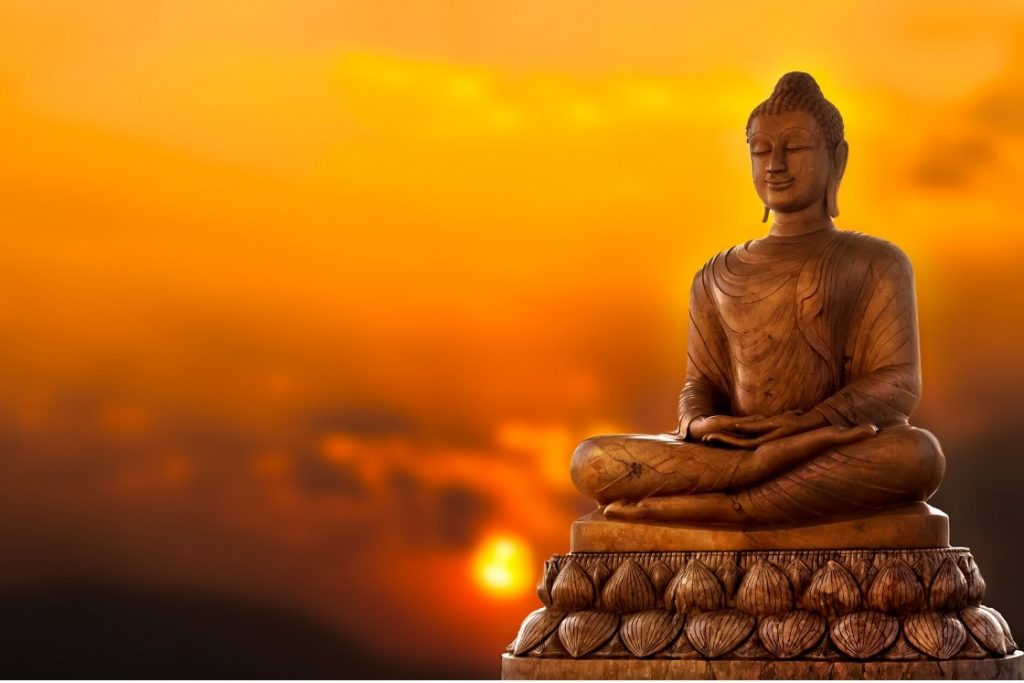
Buddha statues are sometimes distinguished by their distinctive hand gestures, often called Buddha Mudras. Every Mudra represents a major second within the Buddha’s life and holds deep that means in Buddhism, symbolizing ideas like compassion, knowledge, fearlessness, and enlightenment. These gestures aren’t simply symbolic; they’re additionally utilized in meditation to assist practitioners join with the Buddha’s enlightened way of thinking and the teachings he shared.
By working towards these Mudras, people are believed to evoke the non secular qualities the Buddha embodied, guiding them towards self-realization and inside peace.
1. Vitarka Mudra – Hand Gesture of Instructing
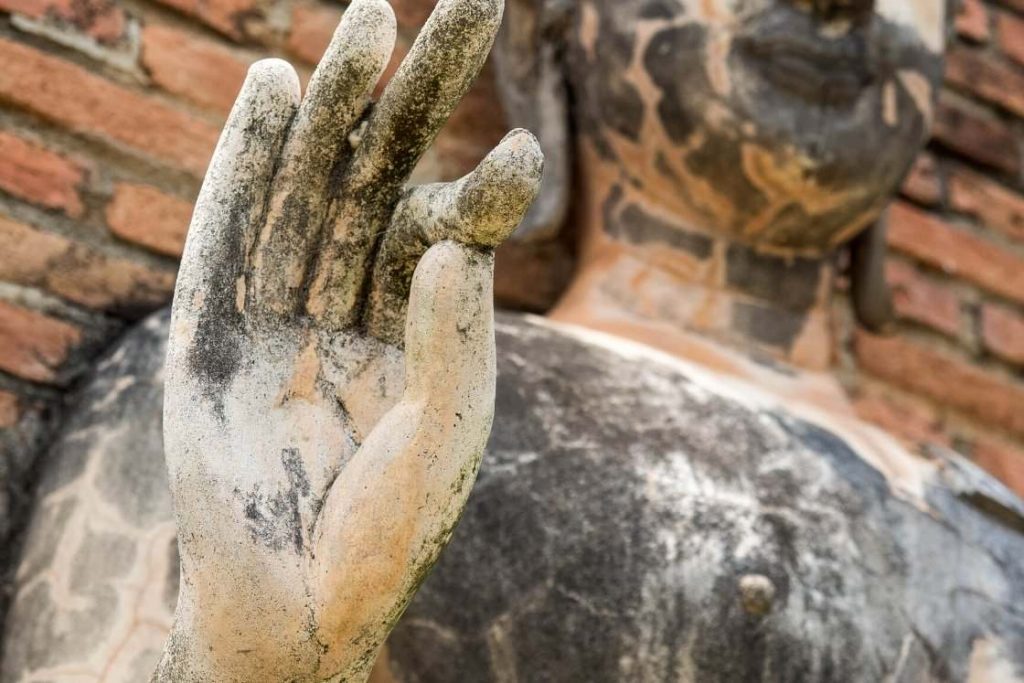
Vitarka Mudra symbolizes the transmission of the Buddha’s teachings, knowledge, and ideas that he acquired after reaching self-realization. It’s usually carried out by elevating the proper hand to chest degree, forming a circle with the thumb and index finger, often called the “wheel of educating.” This circle signifies unity and the infinite nature of information, with no starting or finish.
This mudra emphasizes that phrases aren’t the one technique of communication; it means that teachings may be transmitted invisibly, activating consciousness at a refined degree. It represents the connection between trainer and pupil, also called Vyakhyana Mudra, that means “Gesture of Instruction.”
2. Bhumisparsha Mudra – Gesture of Earth Witnessing

Bhumisparsha is a Sanskrit time period meaning “touching the earth.” This mudra is carried out by touching the bottom to name upon the earth as a witness to a major pledge or occasion. The Buddha used this gesture to affirm his enlightenment underneath the Bodhi tree. There’s a story that goes behind this pivotal second:
When Buddha was sitting in meditation underneath the bodhi tree, he was deluded by a demon named mara. Due to this fact, to proceed his follow, Buddha carried out Bhumisparsha Mudra and request mom earth (Sthavara) to witness his celibacy towards enlightenment.
In Buddha statues, the Bhumisparsha Mudra is depicted with the left hand resting on the lap, and the proper hand extending downward, with the fingers touching the earth and the palm dealing with inward. This portrayal captures the essence of the Buddha’s name to the Earth as a witness to his enlightenment.
This mudra results in the conclusion of non-self (Buddhism) by the unification of nirvana and samsara. Realization or attainment of the upper state is named Nirvana (Mukti or Moksha in Hinduism) and liberating one from the cycle of delivery and demise referred to as Samsara.
3. Dharmachakra Mudra – Gesture of Dharma
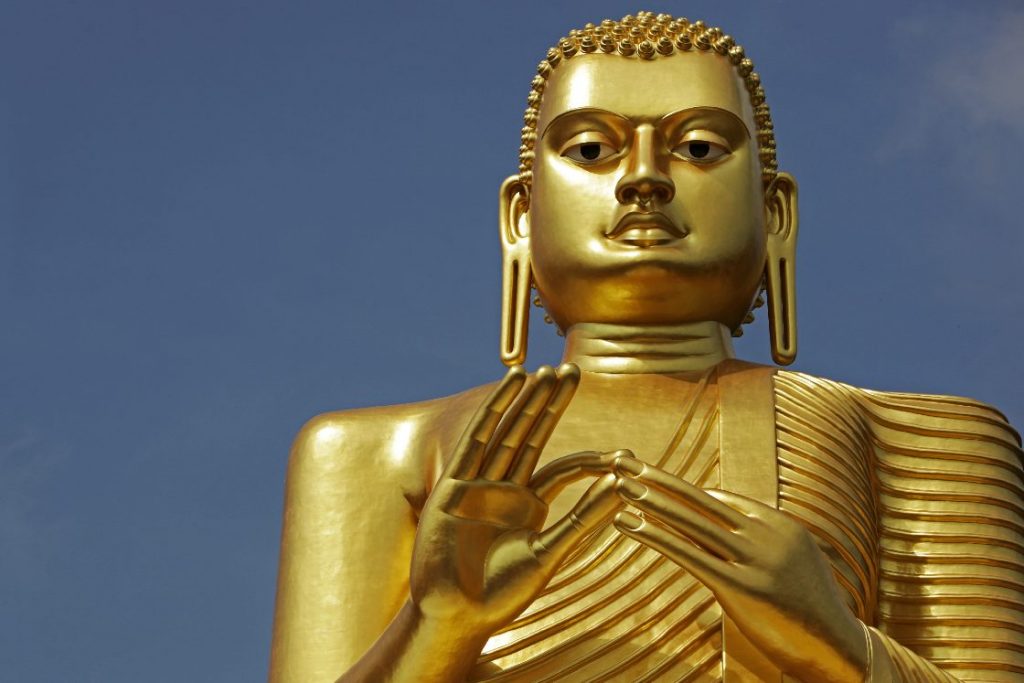
Dharmachakra means ”wheel of Dharma”. This hand gesture is carried out by the buddha whereas delivering his first spiritual educating after attaining enlightenment.
This mudra illustrates the cosmic association of Buddha’s educating, which has a historical past of setting a wheel of Dharma into movement at Sarnath.
Dharmachakra mudra is straightforward to carry out. Each placement and place of fingers and hand displays a sure that means. Likewise, the left and proper hand signifies the perception or consciousness of the outer and inside world.
The three stretched finger represents Buddha, Dharma, Sanga referred to as three jewels in Buddhism. The wheel fashioned by index and thumb finger reveals the affiliation of technique and knowledge within the metaphysical context.
4. Varada Mudra – Gesture of Blessing
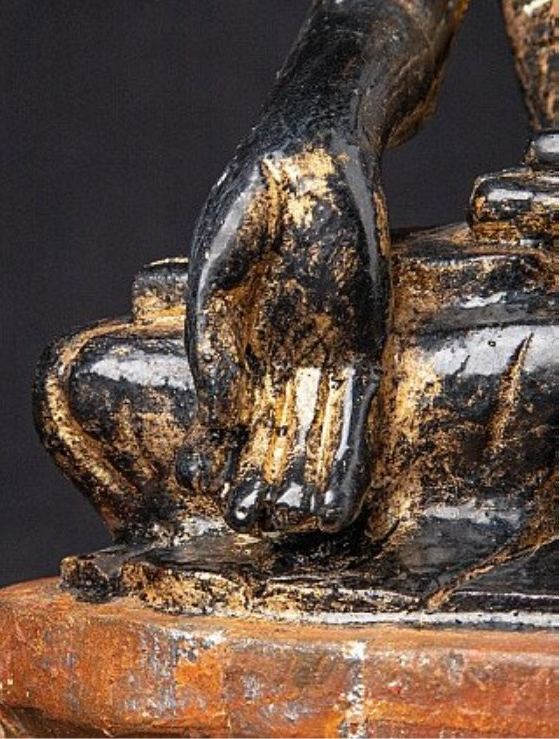
The Varada Mudra symbolizes the Buddha’s compassion and his blessings. It’s also often called the “wish-granting mudra” for disciples searching for non secular blessings from the enlightened guru.
This mudra is carried out with the left arm prolonged downward, the palm dealing with outward, and the fingers upright or barely bent. The 5 fingers pointing downward symbolize the qualities of generosity, morality, endurance, effort, and meditative focus. These qualities assist plant seeds of forgiveness and groundedness within the practitioner’s coronary heart.
Buddha statue is often seen holding Verada mudra with one other mudra referred to as Abhaya mudra (gesture of fearlessness). it brings holy vibes in thoughts when carried out throughout meditation.
5. Abhaya Mudra – Gesture of Fearlessness
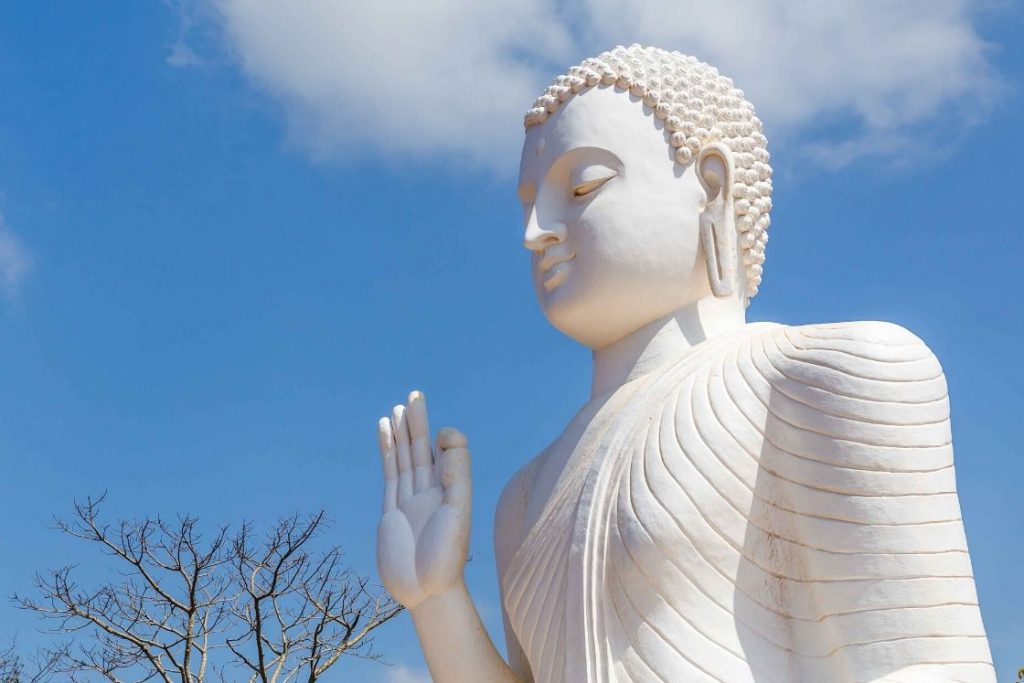
Abhaya Mudra is a hand gesture that represents safety, benevolence, and fearlessness. It’s a variation of Gyan mudra proper hand is lifted to the chest degree and barely raised outward, palm dealing with ahead. Left-arm is hanging downward whereas dealing with the sky beside the physique.
Why Buddha adopted this mudra, there’s story goes this;
As a consequence of jealousy, Devdatta, Buddha’s cousin as soon as needed to kill him. He left a rampaging aspect over the Buddha whereas he was wandering. In the direction of which Buddha carried out Abhaya Mudra, seeing Buddha within the Mudra elephant got here stopped and calmed down earlier than the Buddha.
It’s believed that Abhaya mudra dispels concern earlier than it approaches close to buying one.
Abhaya mudra unfold peace, love, and friendship. It’s mentioned that historic folks used to carry out this mudra whereas assembly or greeting strangers. This reveals the unarmed being approaching one another for the welfare of one another or humankind.
6. Dhyana Mudra – Gesture of Meditation

Seated meditating Buddha in Dhyan Mudra is the commonest image of Buddha. It’s mentioned that Buddha used to follow this mudra earlier than the enlightenment.
Holding arms on this mudra in a meditation session dwells a practitioner into the deep state of supremacy and concord.
In Dhyan mudra, the proper hand is positioned over the left hand and each arms on this place relaxation upon the lap. In another varieties, the ideas of each thumbs joined collectively to type a triangle like construction. It’s referred to as a mystic triangle. The esoteric teams maintain numerous interpretations concerning this triangle. One of many apparent is the identification of mystic hearth, burning all of the impurities.
Shakyamuni and Amitabha Buddha are the illustration of Dhyana Mudra. This mudra is used to heal bodily sickness. It additionally purifies unfavorable karma whereas mantra recitation of Medication or Bhaisajyaguru Buddha.
7. Anjali Mudra – Gesture of Salutation
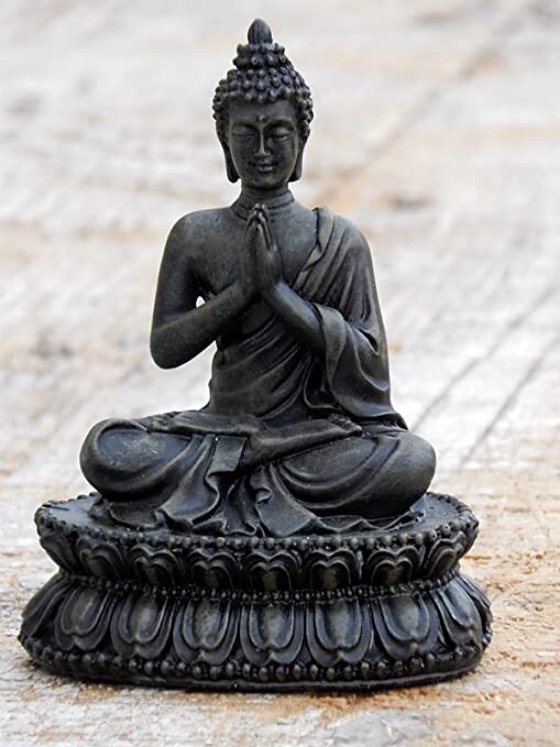
Anjali mudra is a gesture of greeting folks with immense respect and welcoming strategy.
This mudra is usually practiced as a homage to the buddha by the bodhisattva on the trail adopted by buddha. Nevertheless, enlightened Buddhas now not follow this mudra. In response to them, being with the divine power there’s no urge to point out affection towards others as all change into unified or single entities.
This may be carried out by folding hand close to the chest or Anahata chakra, the place each arms signify the 2 elements of the universe, “The fabric world” and “The non secular world”.
8. Karana Mudra – Gesture of Banishing

Karana Mudra represents the deflection of the unfavorable power or push back the evil that is available in your path to reality.
This mudra may be carried out by bringing arms on the chest degree. Folding the ring and center finger inward and contact them on the tip of the thumb whereas palm dealing with outward.
By only a look of this mudra made us really feel protected. This mudra eradicates the evil earlier than it reaches close to you. Fingers placement involved withe this mudra stimulates the power at a refined degree that invigors the physique aura with a divine wrapping that overcomes the obstacles with the potential to hurt our liberation.
9. Uttarbodhi Mudra – Gesture of Self-Realization
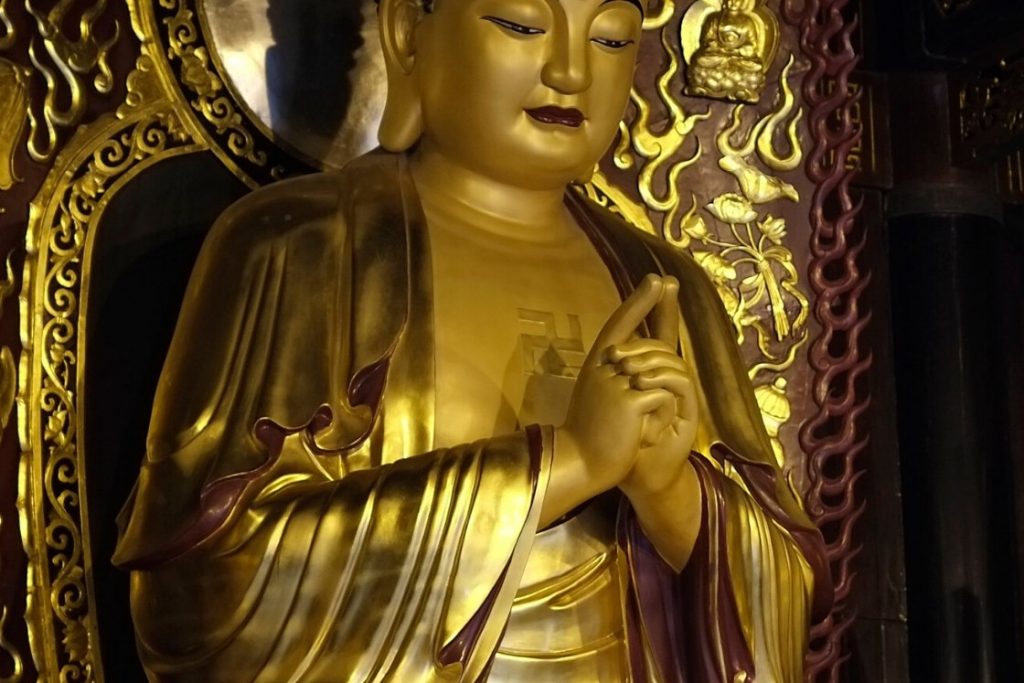
Uttarbodhi mudra lifts a practitioner to the state the place the union of self to the supreme occurs. To carry out it, Be part of hand on the degree of the center area. Intertwined fingers apart from the index and stretch the thumb downward.
Working towards this mudra results in enlightenment as Buddha.
The discovering of self is the continual means of clearing and filtering the phantasm of worldly or materialistic mindset.
Practitioner realises the self by meditating on this mudra on this thought.
Uttarbodhi Mudra gives an perception with which a practitioner take him/her out of the assorted psychological degree attributable to which they’re struggling since a very long time. It additionally helps in confidence and evoking the inside spirit, respectively.
10. Vajra Mudra – Gesture of Fiery Thunderbolt
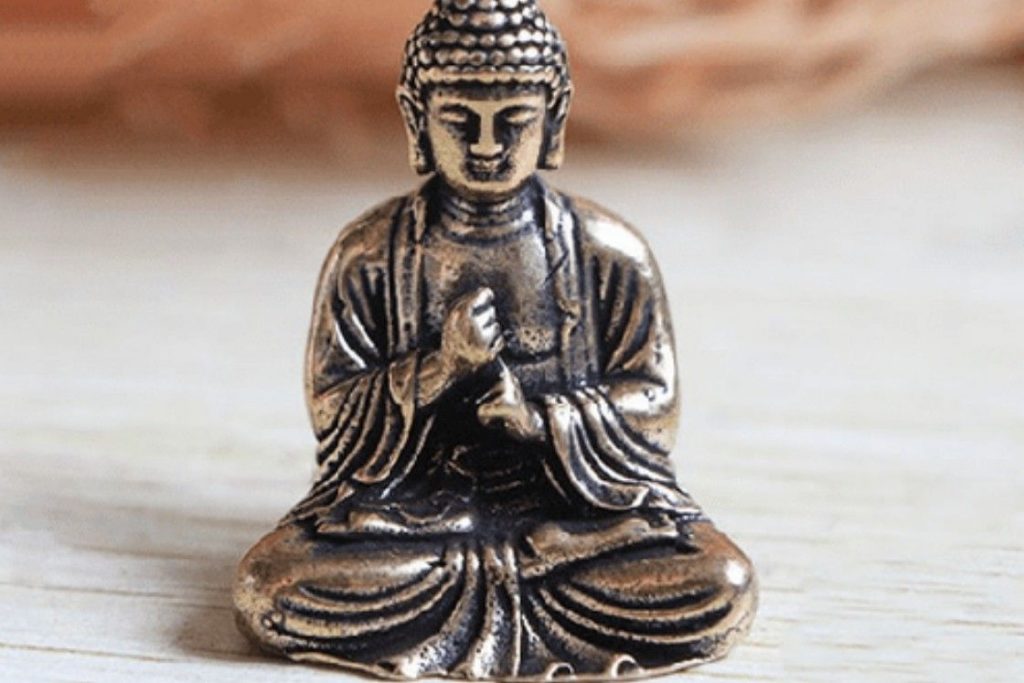
Vajra Mudra is a gesture that expresses the unification of all perception in Buddhism, as per Tantrism. Vajra represents a Thunderbolt (the destroyer of unfavorable and ignorance). Encircling the right-hand fingers across the left index finger varieties the Vajra Mudra.
There are numerous interpretations hooked up to this gesture on this manner. The 5 fingers symbolize the 5 components air, water, area, hearth, and earth encircling the person or physique (left index finger). One other one is the left index finger represents the information and the fingers wrapping, right here signify worldly phantasm.
This mudra is worried with the Vairochana Buddha or the celestial buddha that illuminates one’s perception in the direction of the world. This additionally results in a non secular journey.
Conclusion
Utilizing Buddha Mudras in your meditation follow can considerably improve your non secular journey. Every Mudra symbolizes vital Buddhist ideas like compassion, knowledge, and fearlessness. By including these gestures to your routine, you join extra deeply with the Buddha’s teachings and obtain a extra profound state of meditation.
These Mudras are sensible instruments that provide help to domesticate the qualities they symbolize. Common follow of Buddha Mudras can deepen your connection to Buddhism and promote inside peace and self-realization. Embrace these gestures to complement your meditation and assist your private progress.

